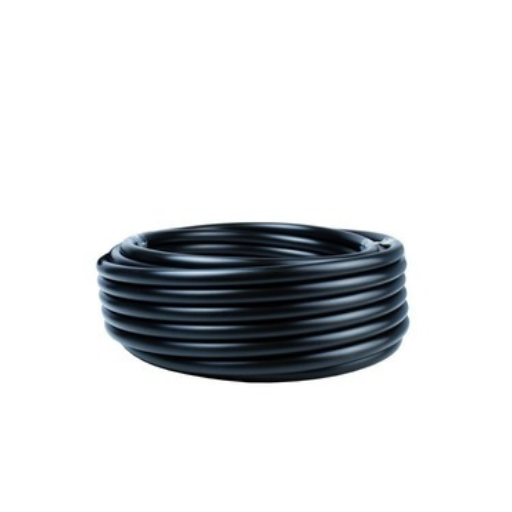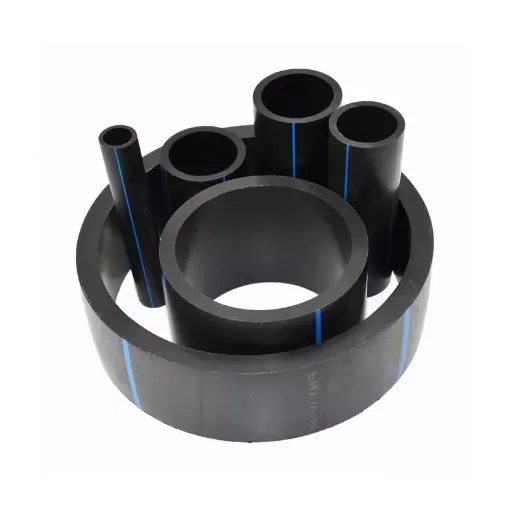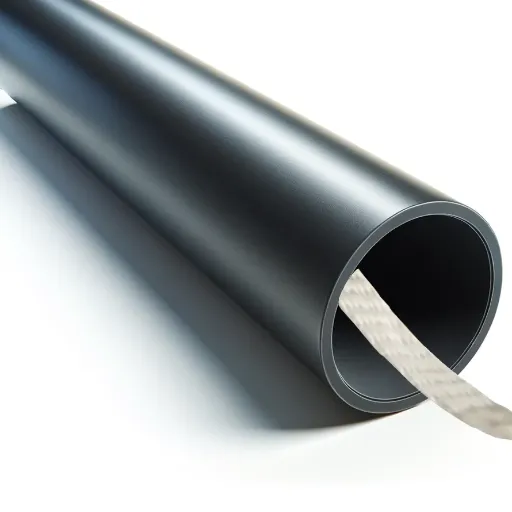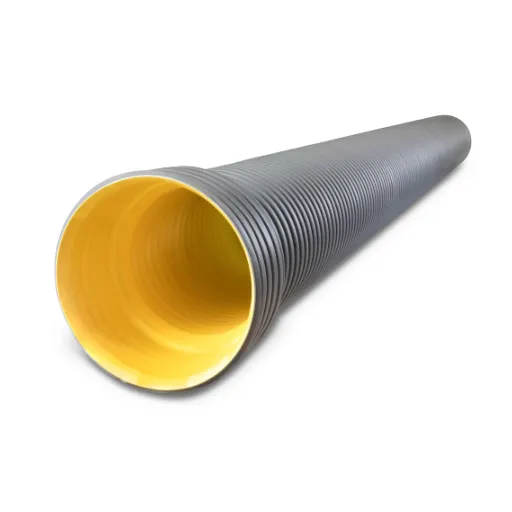High-Density Polyethylene (HDPE) pipes have revolutionized the landscape of fluid and gas conveyance systems, providing unmatched flexibility, durability, and efficiency across a wide range of industries. Whether employed in water distribution, irrigation, or gas pipelines, these pipes have become synonymous with reliability and performance. This article delves into the versatility of flexible HDPE pipes, exploring their key attributes, diverse applications, and the engineering principles that make them an essential component in modern infrastructure. Join us as we uncover how HDPE pipes are addressing critical challenges and shaping the future of pipeline technology.
What Are the Benefits of HDPE Pipes?
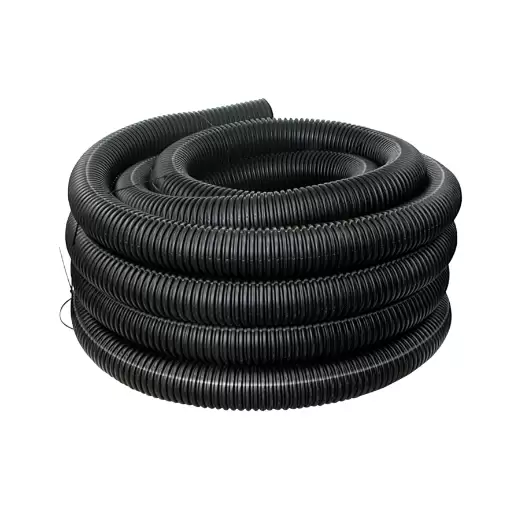
How does HDPE provide chemical resistance?
Due to HDPE’s molecular constitution, high-density polyethylene pipes have great resistance to chemical reactions. The non-polar structure of an HDPE unit poses a dormant danger against further cleavage and organic acids, such as bases, making it one of the most stable compounds. A parasitic damage concern through aggressive chemical exposure brings HDPE as a frontrunner for a primary material durable in the market.
The degree of crystallinity of HDPE regarding a perilous compound attack enables this material to maneuver pipe systems due to long-term exposure to corrosive agents. It is this barrier, aided by molecular bonds, which helps in maintaining the base structure of HDPE. Sustained degradation makes it a multi-functional material for piping, process, and transport systems in chemical-knit industries.
Dissolvent barriers place this pipe ahead for arduous procedures, leveraging a wider range of temperature zones. Alongside, the absence of rusting opens doors for metals absent with overreacting chemicals during usage. Availability of using all these facets makes chemical reactive zones thrive while also making heavy industry infrastructure feel comfortable choosing HDPE pipes.
What makes HDPE pipes durable?
The longevity of HDPE (High-Density Polyethylene) piping is attributed to the types of chemicals used in the production of these pipes as well as their physical characteristics. HDPE is a high-crystalline polymer that aids in preventing cracking, abrasion, and stress. This means that the material is able to withstand a great amount of pressure, giving it a longer life compared to the other options.
Flexibility and ductility also aid in the toughness of the piping. Such properties enable them to endure ground movement/ shifting loads while not breaking. This ability also greatly reduces joint failure, especially in highly environmentally volatile and geologically active regions.
Lastly, HDPE pipes possess great internal and external corrosion resistance. Unlike the metallic options, they do not rust or deteriorate with moisture, chemicals, and aggressive soils. This ensures structural soundness for decades while maintaining low infrastructure maintenance costs.
Why choose flexible HDPE over other materials?
Dynamic environments, such as areas that are less stable and prone to regions that commonly face natural disturbances, benefit from High-Density Polyethylene HDPE pipes as seismic activity or soil shifting can put a strain on these structures and can cause wear and attack on the pipes. Such conditions call for materials that are both durable and can withstand external pressures alongside exhibiting major flexibility. Being so lightweight allows easier installation and transport of the pipes, which directly translates to lower equipment expenses. For construction and rigid materials like steel and concrete, these expenses are far greater.
Metal piping systems are not customizable and flexible, and the implementation of these pipes leads to corrosion. Importing chemicals along with other harsh methods can damage these pipes. High-density Polyethylene piping does not corrode, resulting in HDPE pipes outperforming metal pipes. Reduction of costs in maintenance and an increase in lifespan are direct results of using custom high-density polyethylene piping systems. Smooth internal surfaces make for minimal friction loss, allowing for efficient transport of fluids, which is highly critical for superior pipelines. Along with the smooth internal surfaces are additional benefits when it comes to maintenance expense, alongside offering additional support when using stronger fluids, along with lower costs. This cuts down on repairs on necessary surfaces.
Ultimately, the environmentally friendly traits of HDPE pipes are noteworthy. They can be completely recycled, and their production and transportation consume less energy compared to many other materials, decreasing carbon emissions. Due to the high stiffness and low permeability to various chemicals, as well as the sustainable nature of HDPE, these pipes can be safely and responsibly used in potable water supply systems, gas transmission lines, and industrial water pipelines. The combination of these properties makes HDPE the ideal material for modern infrastructure developments.
How to Ensure Proper HDPE Pipe Installation?
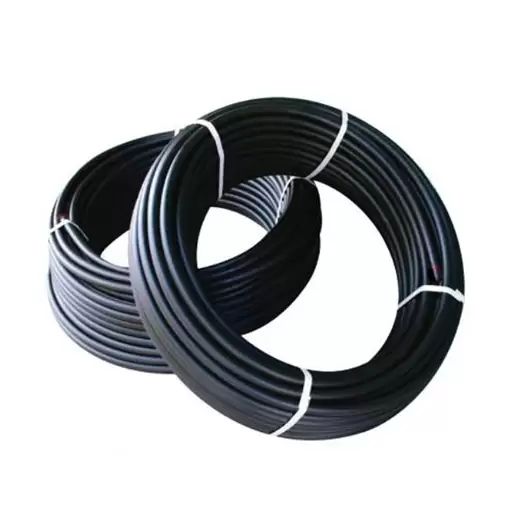
What are the steps for installing HDPE?
Careful HDPE pipe installation will enhance system productivity, safety, and durability. Here’s a helpful complete checklist showing guides and requirements:
- Site Preparation: Prepare the installation site and take into account all details. Ensure a detailed examination of the soil to make sure the ground is capable of supporting the piping system. Make certain that the work area is free of any straightforward obstacles such as trash, soil, or plants that may damage the piping, block, or slow down the installation.
- Trenching: Dig trenches of desired depth and width. Make certain that there is enough space for the pipe position that will enable movement. Smooth any surfaces to prevent unwanted protrusions, cuts, or breaks on the pipe’s protective bubble.
- Pipe Preparation: Before proceeding with the installation of the HDPE pipes, verify that there are no cracks or scratches on the pipes, visually or physically. Be sure that the areas between the pipes are free of soil to make certain that the pipes are clean.
- Pipe Joining: Join HDPE pipes using butt fusion or electrofusion as these methods are approved. In butt fusion, pipe ends are heated to a specific temperature and joined due to controlled pressure merging them into a seamless union. In the case of electrofusion, a special fitting is placed with the fitting and pipe, which gets heated by an electrical current, securing the bond strongly.
- Pressure Testing: A Strip hydrostatic or pneumatic pressure test is done on the joined pipeline and verify its structural rigidity and well as leaking capabilities. The test should be conducted with industry standards and manufacturer protocols to achieve precision.
- Backfilling: Backfill the trench carefully with fine-grain non-injurious material such as sand and screened soil while providing uniform support around the pipe. Aggressive with sharp and larger aggregates that risk damaging pipe walls should be avoided. Compacted backfill fills in layers to prevent settling.
- Final Inspection: After installation, carry out a full system inspection in one go to see if anything is out of place. This includes checking that there isn’t any misalignment, trench coverage isn’t excessive, and assessing the joints and various fittings conditions.
Following these procedures and best practices will help in minimizing the risks or failures that can happen in HDPE pipe installations. To ensure the success of the pipeline system in the long run, routine maintenance and monitoring are also essential.
How to maintain pipe systems for longevity?
To increase the life span of a piping system, I must conduct regular checks for any suspicious damage, wear and tear, or potential blockages. Checks streamline the process, helping to identify leaks and corrosion early on as opposed to waiting till these circumstances become problematic. It is most efficient for me to start from the areas with the most exposed fitting or buried sections, as they suffer the most from environmental factors.
Regular checks are only part of the equation, which is why I enforce strict rules in relation to dirt and internal blockages. I maintain the flow of debris with techniques like flushing or pigging, and do the same for the interior surfaces of the pipes. It is also my job to identify any anomalous changes in pressure or flow rate, as these changes are hidden problems that need urgent fixing.
One last thing I do is do my best not to alter the assembling or pipe material supporting their systems, as this leads to chemical destruction and strain. It’s critical to follow the benchmarks. Failing to conduct regular check-ups, preventive maintenance, and observing set rules drastically reduces the lifespan and efficiency of the piping system, which should be avoided.
What are common HDPE pipe installation challenges?
Like any other part of a construction project, the installation of High-Density Polyethylene (HDPE) pipes presents a myriad of difficulties, including the systems and processes of fusion welding. HDPE pipes are achievable through the processes of welding, however, improper pressure and heating can greatly undermine the integrity of the joint, which will put the entire system at greater risk of collapsing. Additional challenges include the type of trench prep work done. Different bedding types, along with the depth of the trench and the level of compression present within the trench, can lead to the collapse or displacement of the pipe under stress.
The thermal contraction and expansion of HDPE also pose a significant challenge, owing to the fact that, without proper spacing allowances, the environmental temperature fluctuations could result in the buckling or separation of the pipe. Other than that, HDPE systems are subjected to damage from mishandling during the installation or transportation stages.. The pipes risk becoming scratched, gouged, or developing micro-fractures, which hurt the long-term integrity of the pipes due to internal pressure.
The introduction of mechanical connections as well as pipe editing leads to the creation of a pipe system, however, improper usage of them can undermine the efficiency and the lifespan of the system as a whole. Ensuring that the value of the pipe and the overall system is maintained involves following inspection protocols, adhering to the guidelines set by the manufacturer, and engineering design checks, all of which serve to protect the value of the HDPE piping frameworks.
Understanding the Bend Radius of Flexible HDPE Pipes
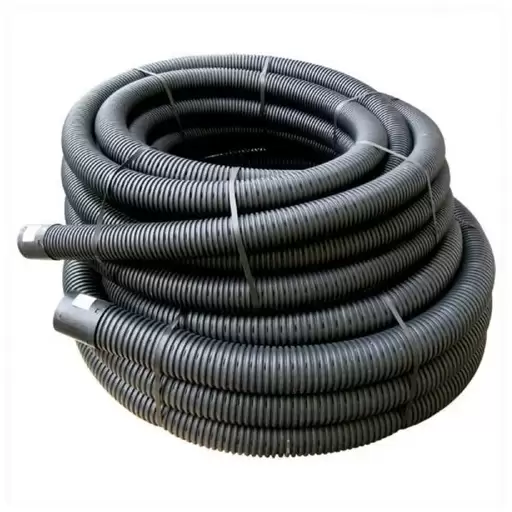
What is the significance of the pipe bend radius?
The bend radius of a flexible HDPE pipe refers to the minimum radius to which the pipe can safely be bent, without causing damage such as kinking, flattening, or loss of structural integrity. This is very important for the longevity and performance of the piping system, especially in applications with frequent directional changes or installation in narrow spaces. Following the minimum bend radius as specified will avoid the creation of excessive stresses that could cause material fatigue, cracking, or even catastrophic failure.
For HDPE pipes, the bend radius is often noted about the pipe’s outer diameter (for instance, 20 times the outer diameter or OD). Not complying with the recommended bend radius causes undue internal stresses, which are detrimental to the pipe’s efficiency under operational pressure. Additionally, appropriate compliance with this radius makes for easier installation, decreases undue stress on joints and fittings, and minimizes the likelihood of catastrophic failure through the entire system. Knowing and maintaining the correct bend radius is especially critical for trenchless installations like horizontal directional drilling (HDD) where the pipe is subjected to greater bending moments.
Precise engineering calculations alongside manufacturer specifications enable system designers to bound the performance and reliability within operational tolerances, achieving balanced resource expenditure and maintenance costs across time.
How to calculate the bend radius accurately?
To achieve an accurate calculation of the bend radius requires both geometric reasoning and specific characteristics of the material in question. About piping and conduits, the bend radius represents the smallest radius the material can be bent to without damage or deformation. The calculation formula is:
Bend Radius (R) = Pipe Diameter / Bend Factor
As mentioned, the bend factor is different due to pipe material, wall thickness, and even the application intent. Usually, manufacturers give these specifications to guarantee the radius works within the structural tolerances of the pipe. Finite Element Analysis (FEA) tools can also provide simulations of stress distribution across the bend, which increases precision for more complex configurations like HDD.
When analyzing trenchless systems, data like soil type, moisture, and temperature are crucial alongside the mechanical calculations. If modeled into design software, engineers can capture accurate real-world situations.
Comparing Flexible HDPE and PVC Pipes
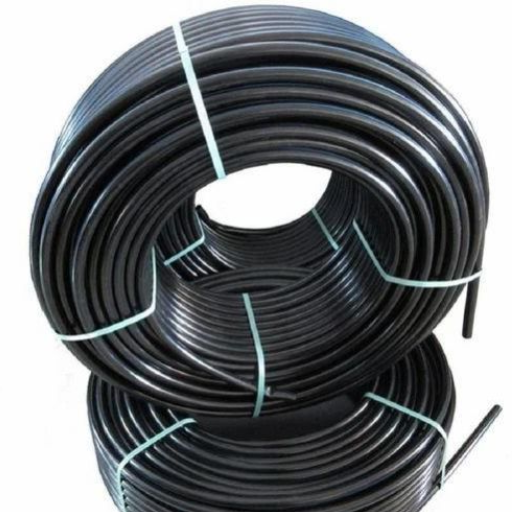
What are the differences in durability and application?
Unlike flexible PVC pipes, Flexible HDPE pipes exhibit greater flexibility, versatility, resilience to a range of factors, and adaptation to stress, which makes them suitable for more difficult tasks. On the contrary, PVC pipes are more straightforward, affordable, and better tailored for stagnant or uncomplicated settings.
|
Property |
HDPE Flexible |
PVC Rigid |
|---|---|---|
|
Bendability |
Excellent |
Limited |
|
Durability |
High |
Moderate |
|
Weight |
Lightweight |
Heavier |
|
Cost Factor |
Higher |
Budget-friendly |
|
Temp Limits |
Wide |
Narrow |
|
Sun Tolerance |
Strong |
Coating needed |
|
Applications |
Industrial |
Domestic |
How do flexible HDPE pipes compare in terms of cost?
In the case of flexible HDPE pipes, it is important to assess the entire life cycle cost of the capital, considering the maintenance, operational lifespan, and required tasks in the lifetime of the pipe. While the material costs for HDPE pipes are relatively high compared to PVC pipes, the cost of replacing or repairing HDPE pipes tends to be lower because they can withstand corrosion, chemical degradation, and environmental stress cracking. Therefore, HDPE pipes are ideal for large-scale projects or harsh environmental conditions since they provide long-term savings.
Furthermore, the additional cost benefits of HDPE pipes are evident in their installation. HDPE pipes are much easier to install compared to PVC pipes, which require joints to be assembled. HDPE pipes can be heat-fused, forming a single, continuous pipeline which prevents water loss and improves hydraulic efficiency. Even though specialized equipment and trained personnel are required for the fusion process, the savings in terms of extensive joint installation reduce overall potential leakage costs, improving cost savings in large pipe network projects.
Economic aspects regarding the cost efficiency of HDPE pipes are revealed through lifecycle analyses. HDPE pipes have a service life of more than 50 years, and PVC pipes have a shorter life expectancy. Under operating conditions, HDPE pipes are more sustainable and resourceful than PVC. Their recyclability also reduces material waste, which may indirectly reduce costs in industries that emphasize environmental compliance. For these reasons, the upfront price of HDPE pipes is typically recouped because of the savings incurred from reliability, maintenance, and significantly longer lifespan of the pipes. This value makes it favorable for applications in municipal water systems and industrial fluid transport.
Which applications are ideal for PVC pipe?
PVC pipes or Polyvinyl Chloride pipes are popular for specific applications due to their durability while remaining cost-effective. Shown below are five areas where PVC excels:
- Potable Water Distribution: Apart from being smooth, PVC is non-corrosive, non-toxic, and helps maintain water quality, which makes it widely accepted in water supply systems. They also enable efficient water flow due to the minimization of friction from the smooth interiors.
- Sewage and Drainage Systems: Due to their exposure to waste and varying pH levels, PVC pipes are best suited for withstanding harsh conditions. Their chemical resistance makes them perfect for prolonged exposure in management for wastewater, sewers, and even stormwater drainage.
- Irrigation Systems: Due to their lightweight build and ease of installation, PVC pipes are preferred in small-scale farming operations. Agriculture and landscaping also rely heavily on these pipes for large-scale irrigation purposes.
- Industrial Piping: Due to its high compressional strength and wide variety of chemical resistance, PVC is suitable for industrial applications. In manufacturing plants, it is used for transporting bases, acids, and other chemical solutions.
- Electrical Conduit Systems: As a non-conductor, PVC provides safe housing for electrical conduits within commercial and industrial systems. In addition, they are also fire retardant, making them perfect to use for protecting electrical wiring.
In each of these applications, PVC pipes always turn out to be trustworthy and economical choices because of their ability to withstand chemicals, being physically strong, and easy maintenance.
Applications of Flexible HDPE Pipes in Various Industries
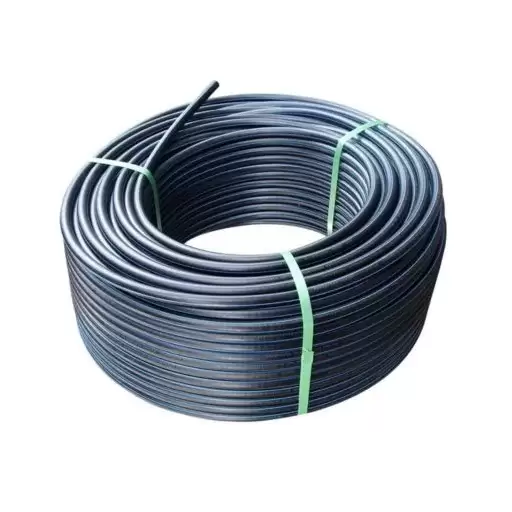
How are these pipes used in irrigation?
From my perspective, due to their intricate physical and chemical characteristics, flexible HDPE (High-Density Polyethylene) pipes are extremely important in Contemporary irrigation systems. These pipes can endure UV radiation and extreme temperatures; therefore, they can be used outdoors for a prolonged period of time in varying climatic conditions. Their lightweight design, along with flexibility, allows for easy installation, even in rough terrains. This is greatly advantageous in agricultural and landscaping projects.
In addition, due to their seamless jointing processes, which is usually done through butt welding or electrofusing, HDPE pipes are unparalleled in preventing leaking. This allows for efficient water delivery with minimal wastage, which is very important in water-scarce regions. Moreover, their resistance to chemicals and corrosion enables them to carry a wide variety of water qualities, such as treated wastewater or nutrient-enriched solution, without degrading or leaching harmful chemicals into the fluid.
In addition, the pipes require little upkeep, which helps farmers and operators of irrigation systems minimize the costs of funding their systems. They also have a high resistance to physical damage resulting from soil displacement or machinery use, both of which are routinely encountered in agricultural work. As a whole, incorporating flexible HDPE pipes into irrigation systems improves efficient water distribution while optimizing sustainable agricultural practices by resource conservation and dependable systems over time.
How is high-density polyethylene employed in pipeline installations?
Due to its strength, flexibility, and economical value, high-density polyethylene (HDPE) is one of the most useful materials when it comes to contemporary pipelines. HDPE pipes are used in different industries such as water treatment, sewage disposal, gas supply, etc. Because of their corrosion-resistant nature, they are ideal for transporting different liquids and gases without the risk of contamination or structural weakening. Furthermore, it is lighter than most materials, which makes it easy to handle and ship.
During its installation, HDPE pipes are joined mainly by heating the pipe ends in heat fusion techniques like butt fusion. These techniques form seamless and leak-proof joints, which ensure the integrity of the pipeline. HDPE piping systems can withstand high-pressure conditions without compromising the structure. In addition, its flexibility means it is able to bear soil or earth movements without breaks. Sophisticated trenchless technologies like horizontal directional drilling also increase the effectiveness of HDPE when it comes to pipelines as they allow placement in difficult geographical locations without the need for major ground breaking.
Because of its durability, potentially lasting up to a century, HDPE can be considered a renewable resource because it’s easily recycled. This shows how it is critical in quality engineering during large-scale infrastructural projects, as it adheres to eco-friendly and economical purposes for modern engineering solutions.
References
Frequently Asked Questions (FAQ)
Q: What are flexible HDPE pipes?
A: Flexible HDPE pipes are made from high-density polyethylene, a strong yet flexible thermoplastic material that provides durability and versatility for a wide range of applications, including gas pipes and irrigation pipes.
Q: What are the advantages of using HDPE pipes over traditional iron pipes?
A: HDPE pipes offer several advantages over traditional iron pipes, including being ductile, easy to install, and providing leak-free performance. They also have excellent impact resistance and can handle high and low temperatures effectively.
Q: How is HDPE pipe suitable for use in weather conditions?
A: HDPE pipe is designed to withstand various weather conditions due to its flexibility and robustness. It remains ductile in cold temperatures and does not become brittle, making it ideal for outdoor piping applications.
Q: What is pipe bursting, and how is HDPE pipe involved?
A: Pipe bursting is a trenchless method for replacing old pipelines. HDPE pipes are ideal for this technique due to their flexibility and tensile strength, allowing them to be pulled through the existing pipe to create a new, leak-free line.
Q: How does HDPE pipe contribute to effective water management?
A: HDPE pipes are used in irrigation systems and can be installed under rivers and lakes without compromising performance. Their flexibility and ability to form fusion joints ensure a reliable and efficient water management system.
Q: What are microducts, and how do they relate to HDPE pipes?
A: Microducts are small conduits used for housing fiber optic cables and broadband networks. HDPE pipes are often extruded to form these microducts, providing a protective and flexible conduit for telecommunications infrastructure.
Q: How is HDPE pipe suitable for high-pressure applications?
A: HDPE pipes have a high tensile strength and can handle pressures measured in pounds per square inch (PSI), making them suitable for high-pressure applications such as gas and water distribution systems.



